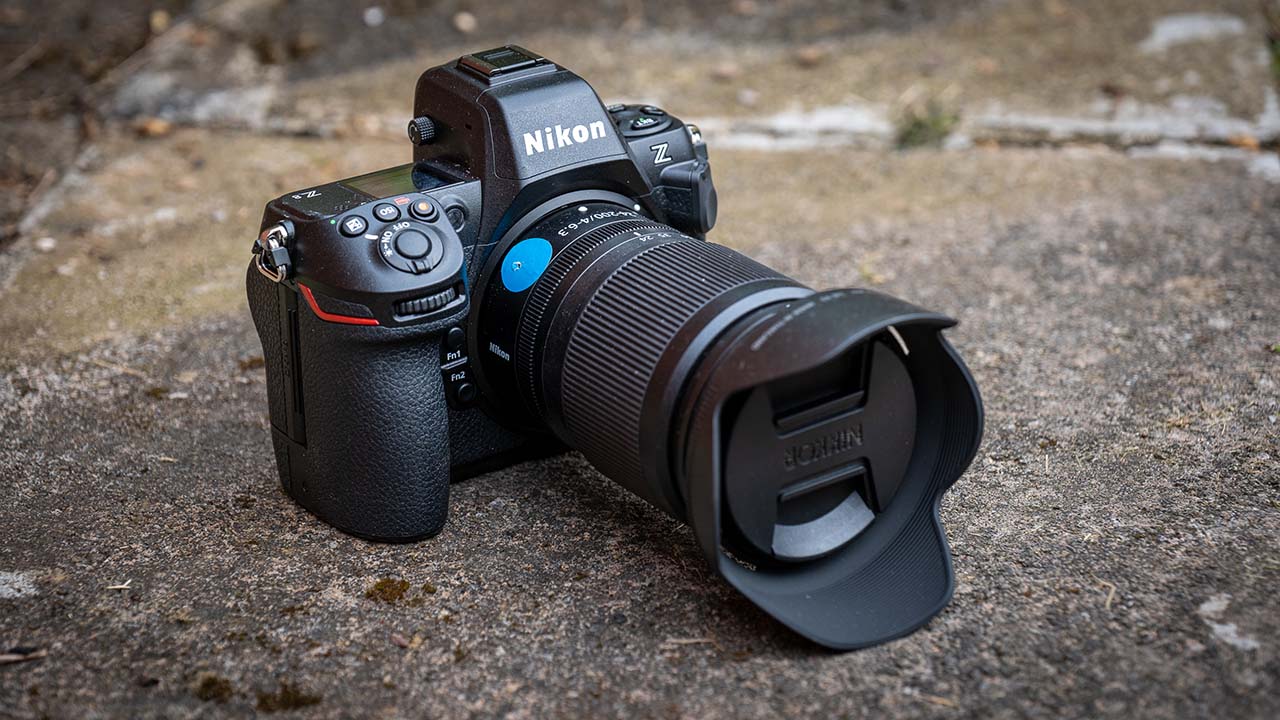
Simon Wyndham reviews the Nikon Z8, a camera that promises to be the true successor to the seminal D850.
When the Nikon Z9 was released it was seen, rightly, as a powerhouse camera that would serve the needs of top level photographers. Along with incredible stills capabilities, such as 120fps continuous burst shooting, it also featured 8K raw video as well. It was, however, a camera that a lot of photographers could only dream of owning, owing to its high price tag.
Rumours had been circulating for some time that Nikon was going to announce a true successor to its highly regarded D850, one of the best DSLRs ever designed. Would it replace it with another DSLR system, or would it go full mirrorless? The potential answer came when the Z9 came onto the scene along with an announcement from Nikon that it was not intending to release any more professional level DSLRs, instead moving to fully mirrorless systems.
This year, Nikon announced and then subsequently released the Z8, a camera that shares much of the DNA from the $5500 Z9, but in a slightly less expensive form. The emphasis there is on the word 'slightly', because the Z8 still clocks in at $4000 for the body alone, very much making it mostly a high level user gig only.
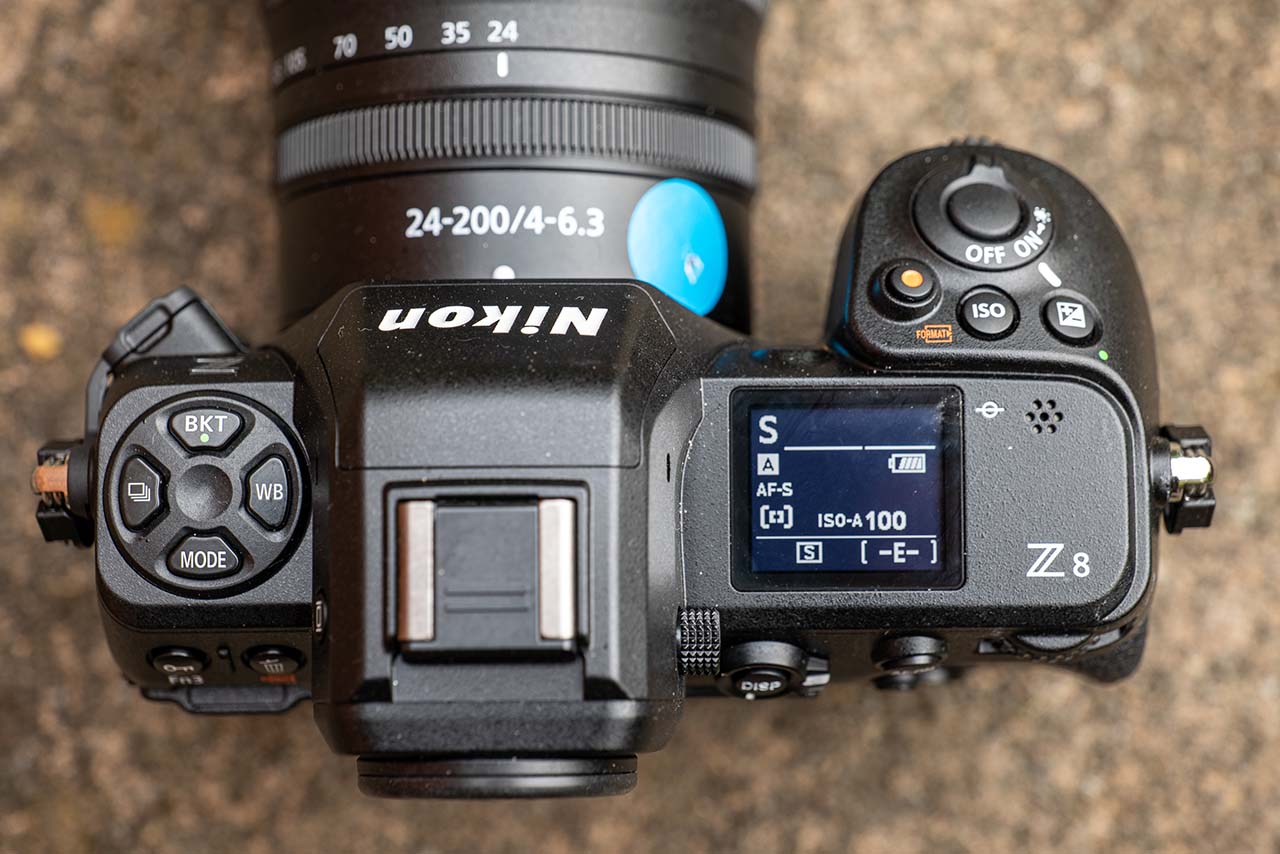
The top of the Z8 is very similar to the Z9, sharing the same information display
First impressions
On first holding the Z8, it was obvious that this was a smaller system than the Z9. It lacks the built in battery base of its pricer brethren, and is therefore a bit easier to carry around. Make no mistake though, it's still a chunky bit of kit. The Z8 weighs in at 910 grams with the battery and memory card, while the Z9 is 1340 grams.
One thing I did observe was that I thought the buttons seemed a bit 'cheaper' in feel to those on the Z9. I couldn't quite put my finger on it, pardon the pun, but aspects such as this did make me think that costs needed to be reduced somewhere. After all, the Z8 has many of the same features as the Z9, so there has to be a difference somewhere along the line.
The Z8 uses the same 45.7MP stacked BSI sensor as the Z9, and it also uses the same Expeed 7 processing engine. ISO ratings are also the same at ISO 64-25,600 in standard mode and ISO 32-102,400 in extended mode. Both cameras are also capable of capturing full resolution raw images in 20fps bursts up to 1000 captures, with cropped JPEG capture possible at up to 120fps. Additionally, both cameras feature the same 493 point phase detection autofocus system with subject detection.
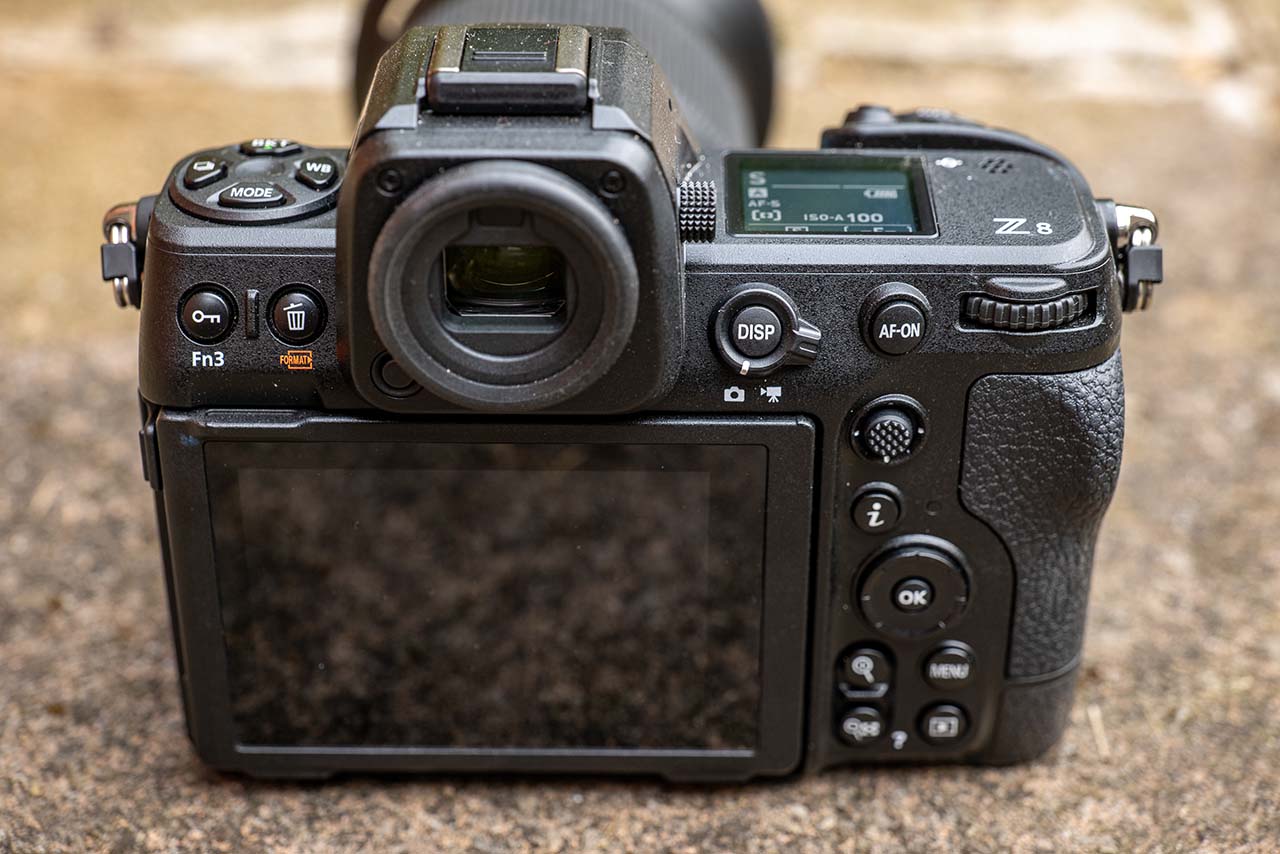
The rear of the Z8 has a slightly more simplified button layout compared to the Z9, missing functions such as the dedicated quality and white balance buttons
Video-wise, both the Z9 and the Z8 can capture 8K N-RAW video (7680 x 4320) at up to 60fps, and 4K at up to 120fps. The main difference being that the Z9, likely owing to a larger body, and hence better thermal regulation, can record for longer periods.
There are other differences between the two, including the fact that the Z8 has one CFexpress and one SD card slot compared to the dual CFexpress type B slots of the Z9. The battery on the Z8 is also smaller, allowing capture of between 340 and 370 images depending on whether the EVF or LCD screen is used, vs around 740 images for the Z9.
The Z8 has some advantages over the Z9 when it comes to connectivity, such as the dual USB-C ports, which allow the camera to be powered or charged by an external source whilst using the second port for other purposes. The Z9 has a built in ethernet port, although both feature a full size HDMI socket.
A feature I liked on both cameras, and indeed on all of Nikon's Z range of cameras is that they all feature an alignment hole for tripod plates. One of my frustrations with a lot of mirrorless cameras is that they don't feature this, meaning that it is easy for the camera to rotate on the tripod plate inadvertently. There's no such problem with this on the Nikon cameras.
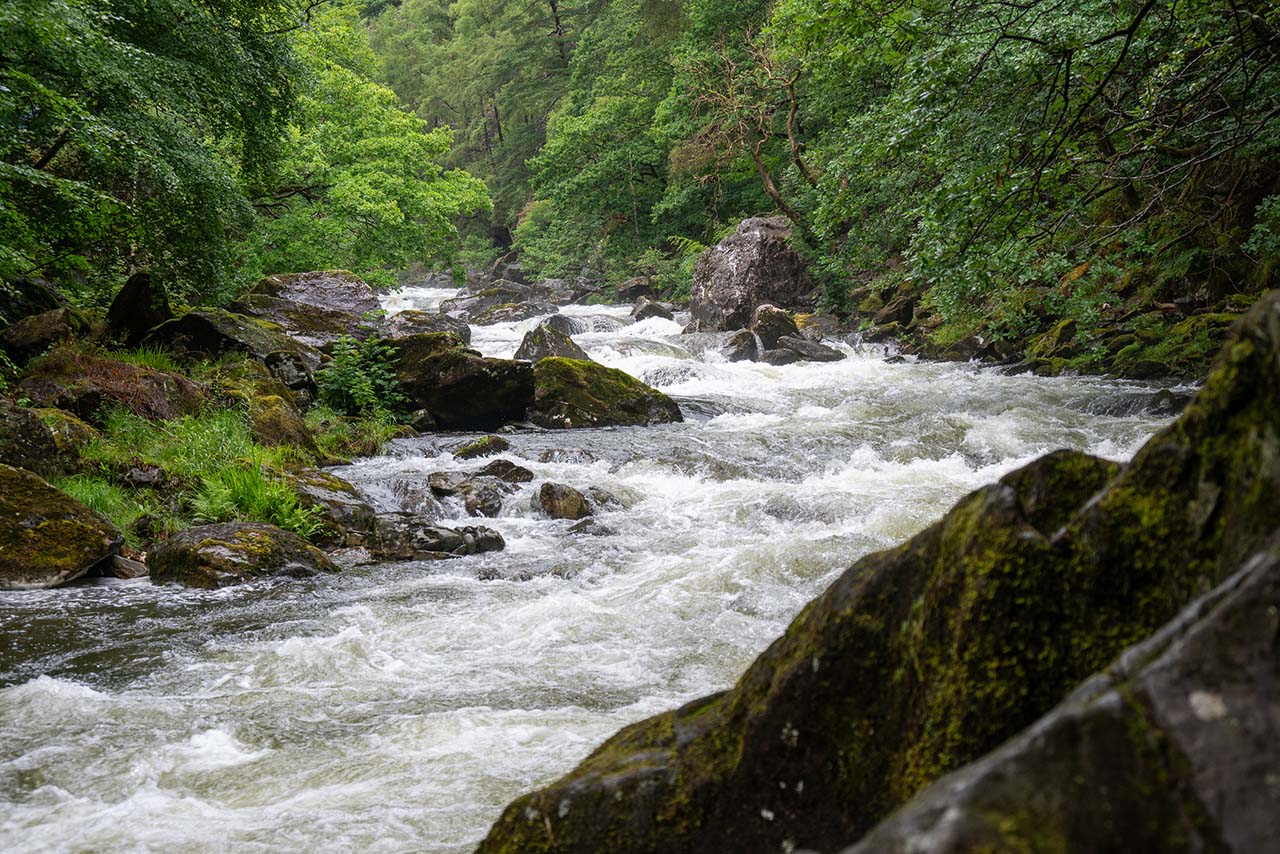
The Aberglaslyn Gorge in North Wales, taken with the Nikon Z8
Using the Z8
Using the Z8 was a very similar experience to the Z9. I don't find the user interface for controlling camera settings such a shutter speed etc quite as intuitive as some other makes, but for the most part, once you're used to it, works just fine.
The information display on the top of the camera is easy to read, and the EVF, just like the Z9 is very sharp and clear. It was certainly a lot easier moving around with the camera than the Z9, thanks to its lower bulk. Although just as with the Panasonic S5 vs the S1 series, once you add on a big telephoto lens, that size and weight advantage soon disappears.
Autofocus on static objects was instantaneous. While taking photos of kayakers, the system kept up fairly well. It was occasionally fooled by water and sun reflections, but considering how many cameras I've used in such scenarios that have had huge difficulty keeping focus, the Z8 did a sterling job of tracking people throughout the photo bursts. One thing I did find, though, was that the shutter button could be a tad over-sensitive. Often I'd accidentally fire off a burst of shots when I'd only intended to simply get focus.
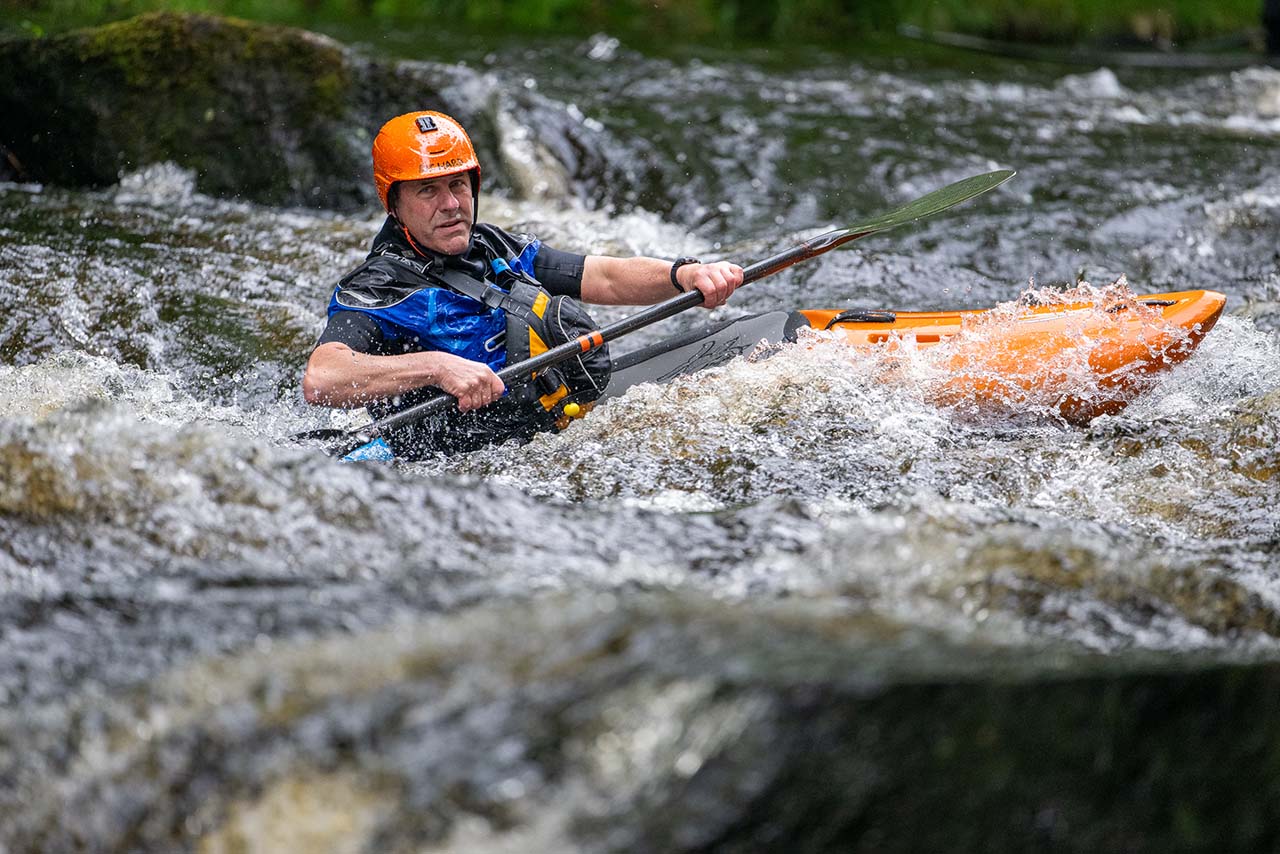
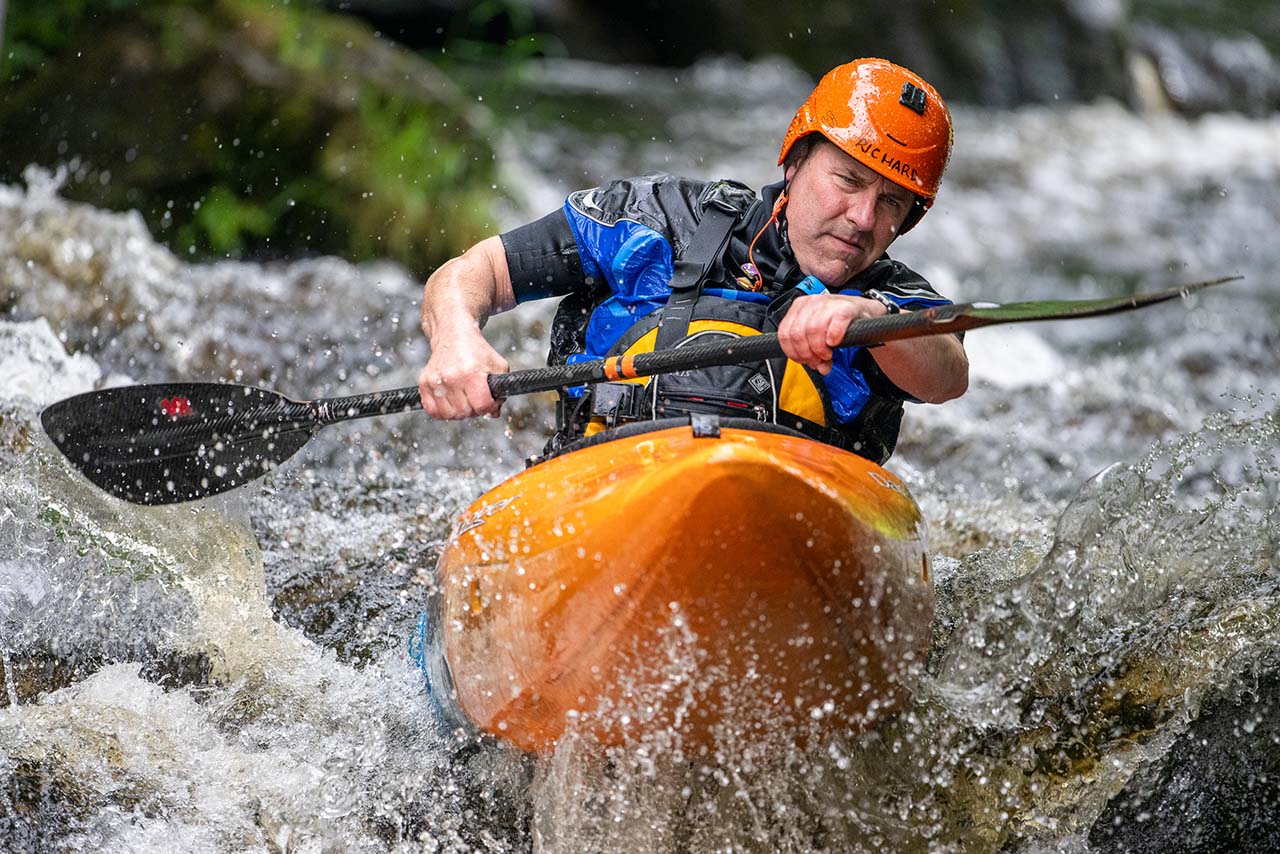
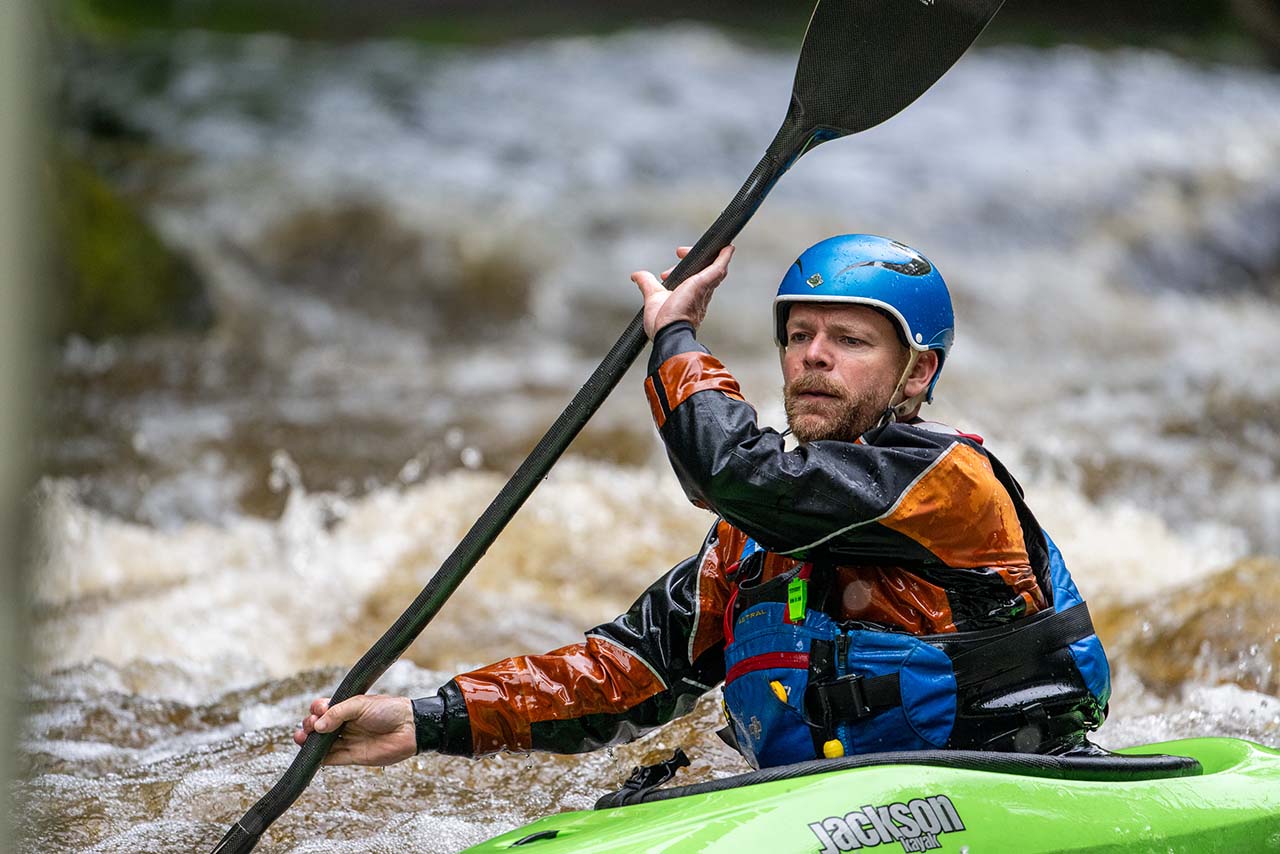
A selection of shots taken with the Z8's 20fps raw burst mode. Images adjusted in Lightroom
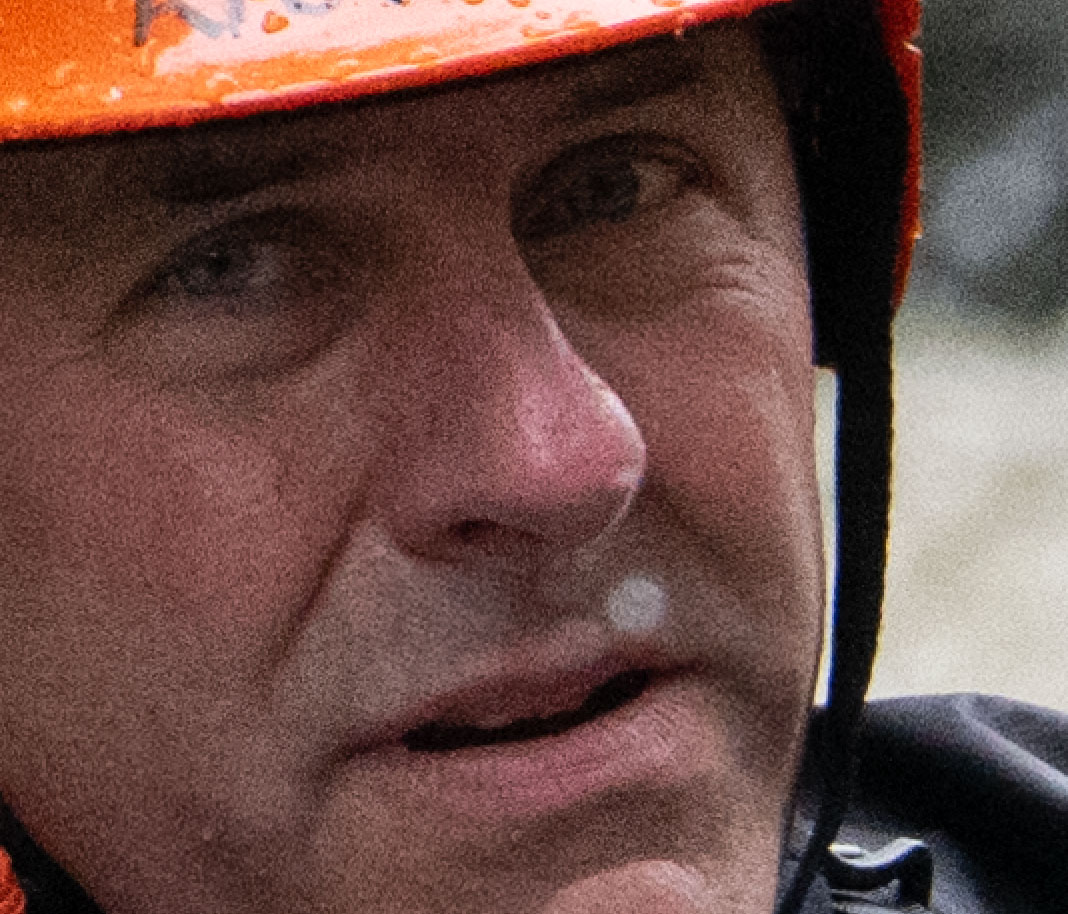 100% crop of unadjusted image taken at ISO3200. Remember, this is a 45MP image, and noise can seem exaggerated at such high zoom levels compared to normal viewing sizes, so be sure to compare the size of the kayakers head as a portion of the image (full image shown previously) to make a true judgement
100% crop of unadjusted image taken at ISO3200. Remember, this is a 45MP image, and noise can seem exaggerated at such high zoom levels compared to normal viewing sizes, so be sure to compare the size of the kayakers head as a portion of the image (full image shown previously) to make a true judgement
I did find that, particularly when firing off lots of bursts, that the battery life was noticeably shorter than the Z9. A battery base would certainly be a useful addition for any heavy burst user. Although the question then becomes whether the Z9 might have been the better choice, particularly since there's only one CFexpress slot on the Z8.
It's worth noting, however, that both the Z8 and the Z9 have flash sync speeds of 1/200, which for such flagship cameras is fairly low compared to competition such as the Sony A1, which goes up to 1/400, despite having a mechanical shutter. In fact the Alpha 1 can reach up to 1/500 in APS-C mode. Such a feature could become critically important to professionals who are working in sports and wedding environments with a mixture of daylight and strobe lighting. Flash sync speed is often a feature that goes under the radar in reviews, but it can be crucially important for a lot of photographers to take into consideration.
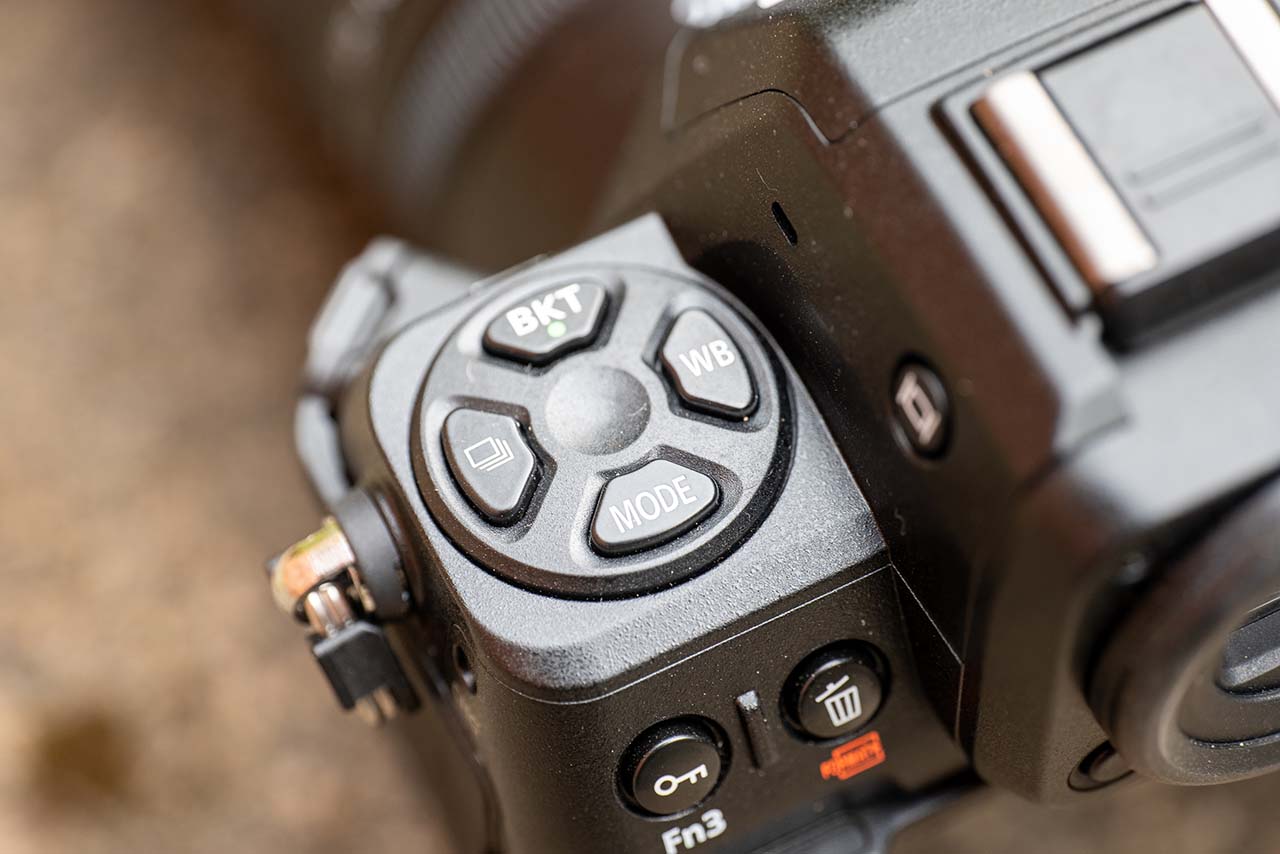
I found some buttons to feel a little 'cheap'
Ultimately, the experience of using the Z8 will be very familiar to anyone who is used to Nikon's cameras. The image quality, as you'd expect, is pretty much indistinguishable from that of the Z9. Nikon cameras seem to produce an image that have a nice organic quality to them, and it's no different here. Raw images were very pliable, and contained a substantial amount of detail within shadow areas. I found I could protect the highlights, very confident in the knowledge that bringing up shadow detail later would be no issue at all, and noise levels were very well controlled.
Conclusions
Reviewing a camera like the Z8 is a tricky proposition, because for all intents and purposes, anything I said about the Z9 could also apply to this camera. Any modern camera is going to give a substantially good image, even on much less expensive devices. What you're paying for on cameras like the Z8 and Z9 is a more substantial build quality that will stand up to the rigours of day-to-day professional shooting, more reliable and accurate autofocus, and very fast burst shooting to suit sports and action photographers.
The video capabilities of the two cameras are also important, but I think it's important to say that it's stills photographers who are the main focus of these products. Ultimately, the Z8 isn't just a smaller alternative to the Z9, it will also find use as a second camera to existing Z9 users. These are cameras that will find many years of use, particularly since they both completely ditch the mechanical shutter, drastically extending their usable life in a professional scenario, and minimising any maintenance costs over time.
It almost seems silly to make a recommendation for the Z8, for the simple reason that most professional photographers are generally entrenched in their favourite systems already. Those who are Nikon users already are unlikely to be considering a Sony or a Canon, and vice versa because lots of lens investments will have been made. For those who are considering a system changeover, it will come with lots and lots of carefully considered thought.
I will say this, the Z8, just like the Z9 before it, is an impressive camera and a worthy successor to the D850. What's even better is that we know that the features and capabilities of these cameras will filter down eventually into lower priced products before long.
Tags: Production Featured Review Cameras
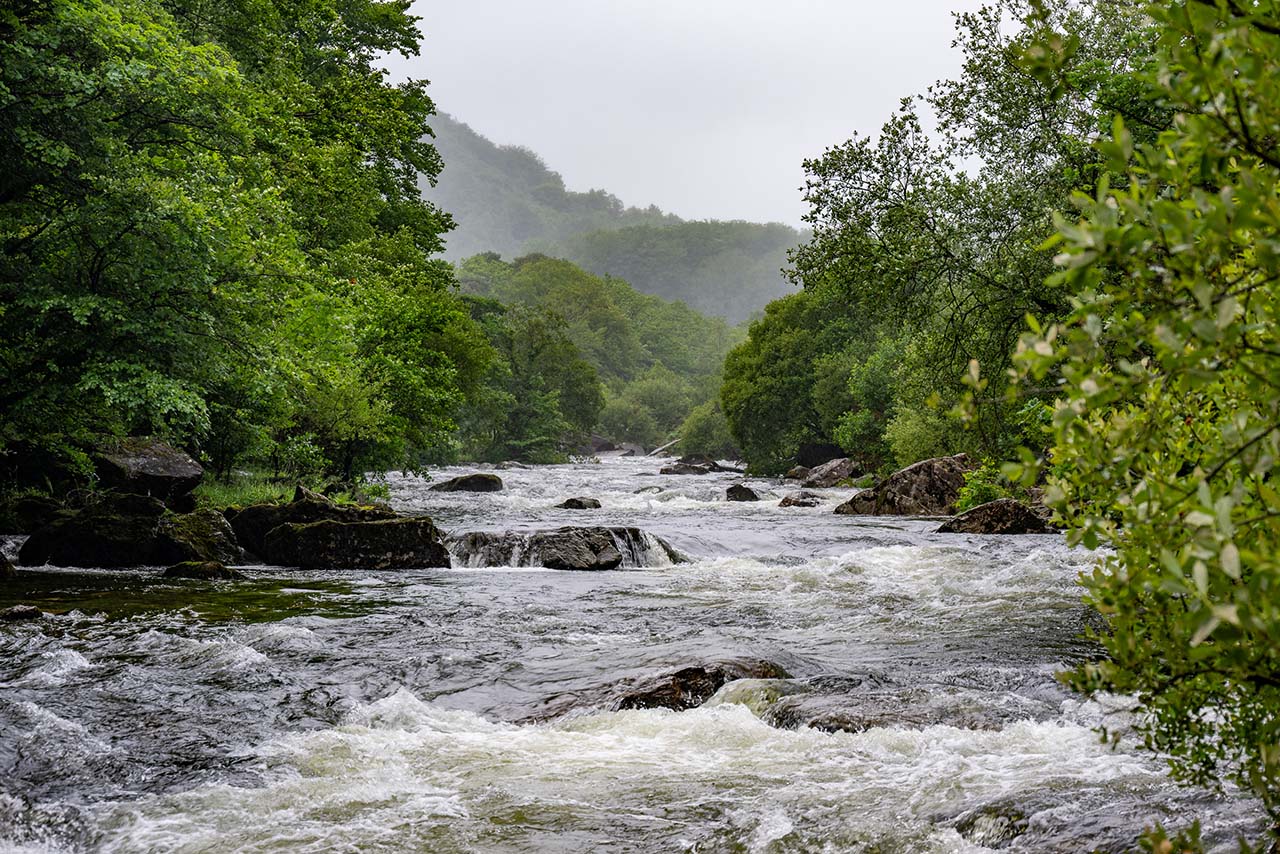


Comments